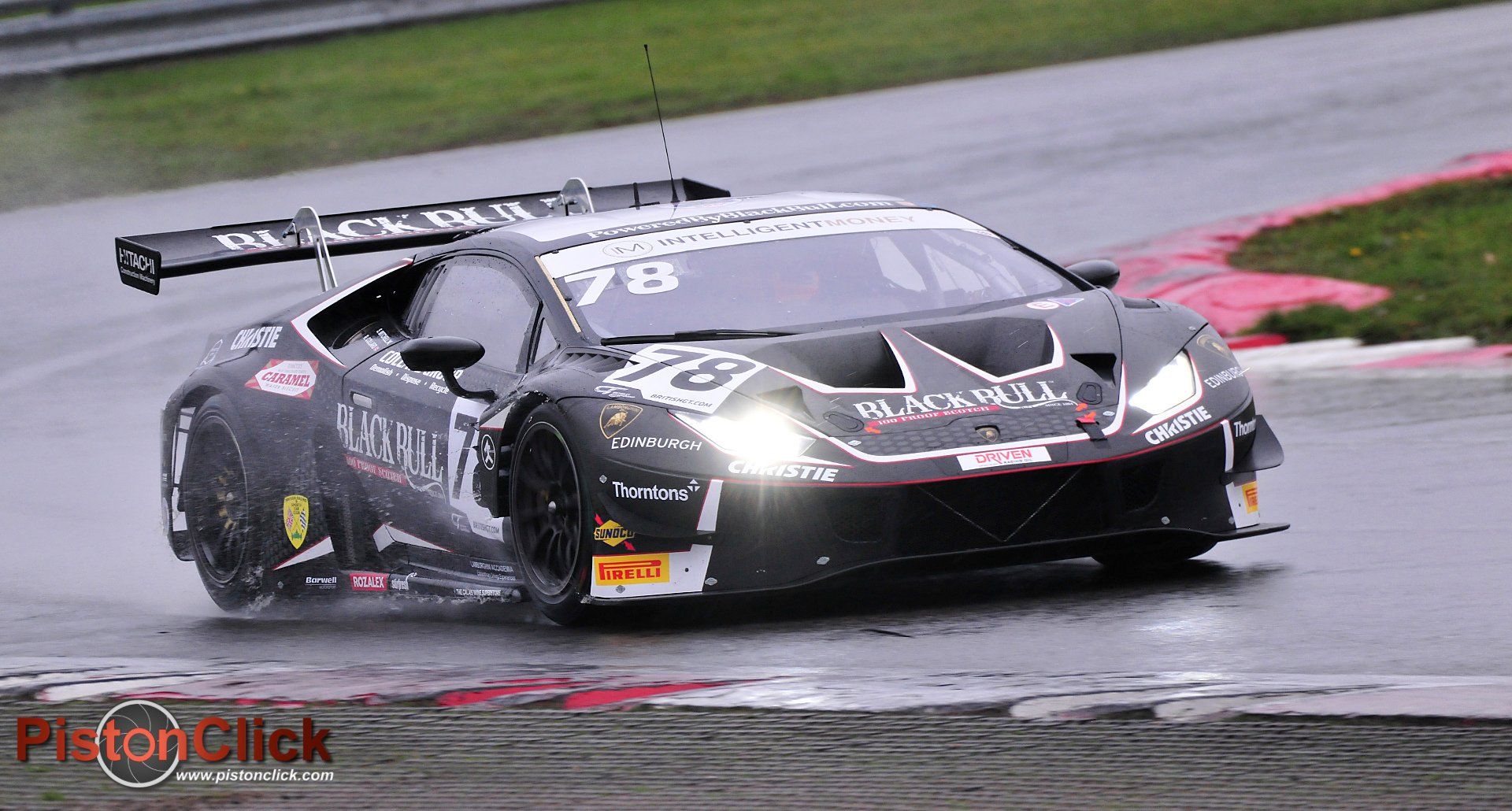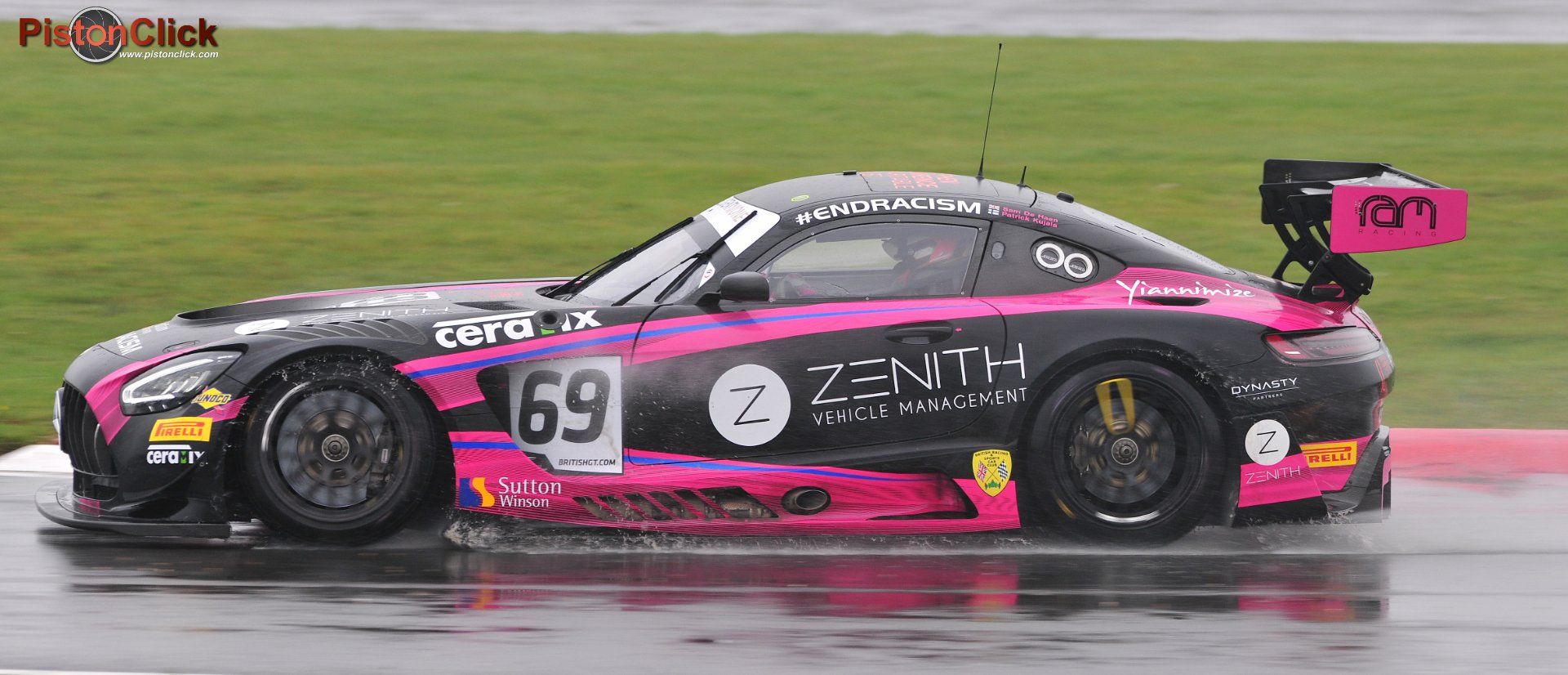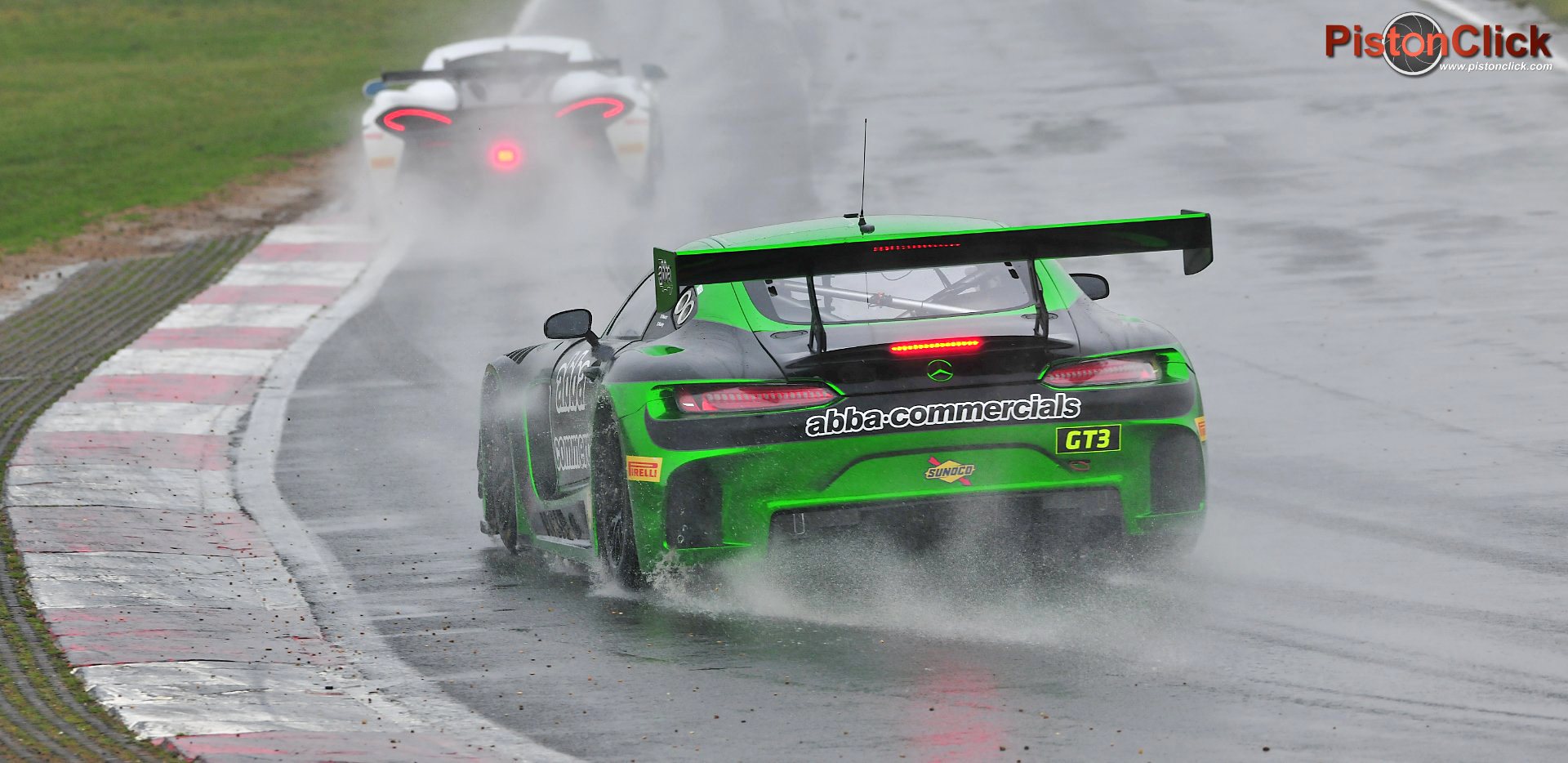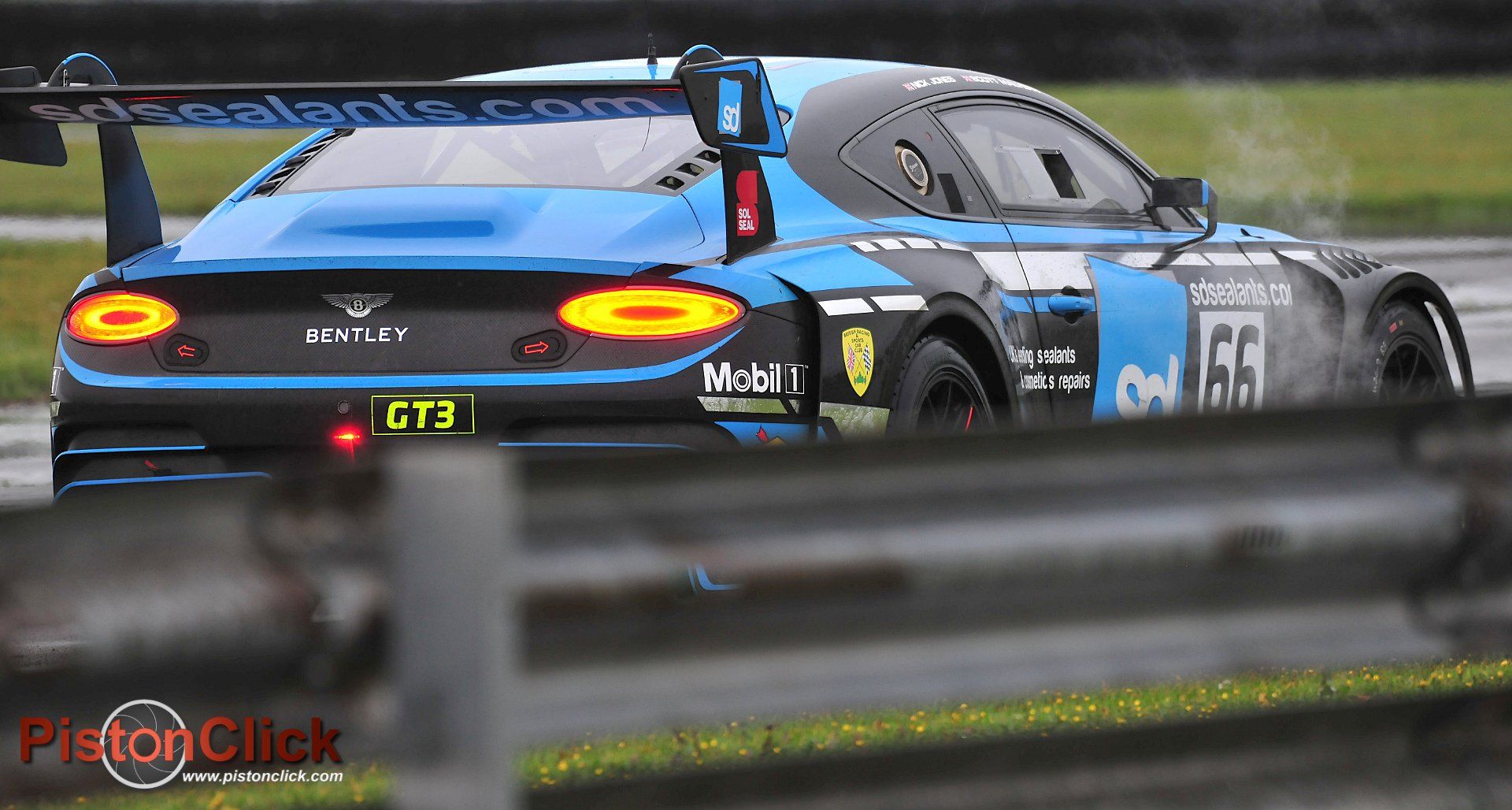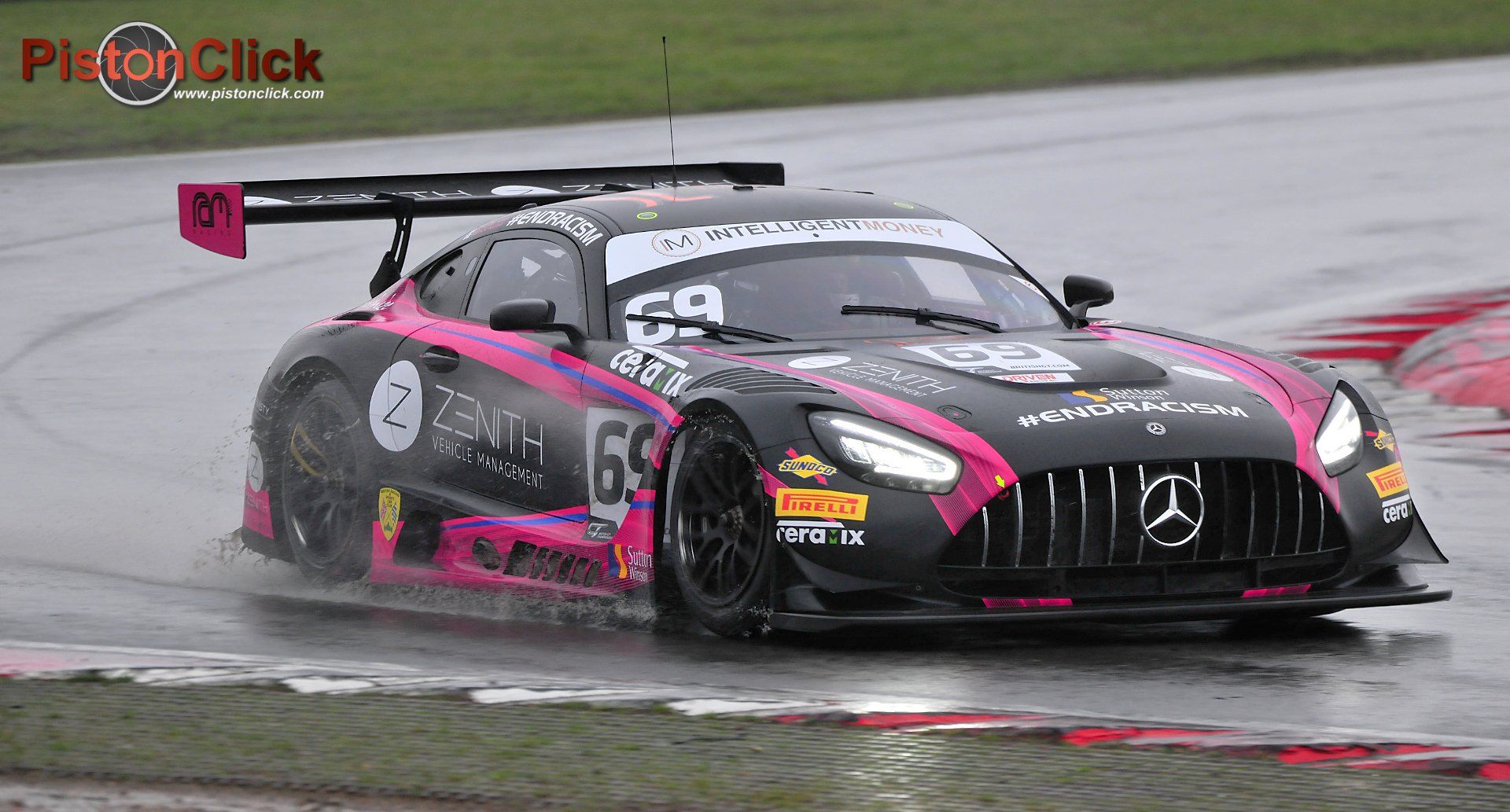Photographing the British GT qualifying for rounds Seven and Eight
Snetterton
3rd October 2020
This is Round Seven of the British GT Championship from a wet Snetterton. Coincidentally seven months ago the Pistonclick team were here capturing the media day and looking forward to a new year of Motor sports, that was until CV19 reared its ugly head.
That seven months has changed the world, it’s changed the way we live, the way we socialise and most definitely the way we watch motorsports. The days of squeezing up to the fence with loads of strangers has long gone.
The days of grabbing a selfie with the drivers or getting your cap signed has gone. The days of walking round the pits and paddock checking out the cars are but a distant memory.
What has not changed much is the racing. The GT Championship is still as bold and loud as it has always has been. The GT 3 and GT 4 are all great looking cars. Even in road trim these cars would demand a second glance if you saw them drive down your street.
Stripped down to the minimum race trim with all the creature comforts removed, dripping with the latest racing tech and wrapped in striking livery, these cars demand attention.
For the last few years I have made a point of taking in a few rounds of the championship. The spectacle of an AMG Mercedes being chased by a Maclaren and a Mustang is not something you see racing every weekend.
Also, every time I have taken in the GT racing I have been very lucky with the weather, it has been excellent, until today.
Storm Alex had been widely reported on the TV with weather warnings issued by the met office. Only the die hard fans would be out watching the racing this weekend, plus a Pistonclick spectator photographer.
So why had I made the journey into darkest Norfolk with inclement weather on the horizon?
While the lockdown was in place and there were no races being held, the Pistonclick team kept the site ticking over by gathering together different motorsports themes. Our favourite motorsports pictures, panning, crash and racing in the rain were all showcased on this web site.
So you can probably work out what I was trying to capture at Snetterton.
If you are going to select cars to photograph in the rain there are a few things you need to consider. The air flow over the car is all important. A square mini will have a less dramatic effect chanelling the moisture away than a full on F1 car.
Also the wheel size has a dramatic affect on the amount of water they can displace, more water moved = more spray. As the Silverstone hosted F1 wasn’t allowing spectators, the GT and F3 race cars will have to do, and do very nicely thank you.
To be honest, I would have gone to Snetterton even if the weather had been good but the rain added a new dimension so I was looking forward to it.
My camera for the day was my old trusty Nikon D3X which is a fully weather sealed body matched to the amateur photographer's favourite, the superzoom lens, in this case the Nikon 200-500mm.
Even though the kit is weather sealed, I have previously tested this by submerging my kit in a puddle with no ill affect, so I’m confident that a bit of rain won’t harm it, although I still put a waterproof cover over the lens and body.
Why? Well as a large supermarket retailer says, every little helps and it won’t harm it so why not?
So let’s look at some tips for taking photos in the rain. First, as I have said, protect your kit. If you are not worrying about whether your kit is going to survive the day you can concentrate on getting “that” shot.
The cover I use was a no name brand from eBay. It’s a plastic cover with a hole at each end. One has a draw string so it fits snugly round the lens hood. In the past I’ve taped a plastic carrier bag to the lens hood.
This worked well and amused the team, which is why I think they allow me to tag along, the amusement factor and nothing to do with the skills I have as a photographer!
The second tip is carry a clean micro fibre cloth. No matter how careful you are, a fine misting of spray will hang in the air from the cars and find its way on to the front lens element. If you allow this to build up it will let less light in and soften the image.
Carefully inspect the lens. You are looking for dirt or anything that will scratch the lens, then gently remove the moisture. Keeping your lens facing down between shots will help, and check out the wind direction. Shoot with the wind to your back.
Ideally you should go and get your lens cleaning kit and use a lint free cloth, but in my experience, emergency field cleaning with a micro fibre cloth works when the lens is wet, but don’t do it to a dry lens.
Now let's get to the important bit - taking images in difficult light, which Snetterton was. I'm always interested in what other photographers are up to so afterwards, I browsed the internet looking at what the other photographers had posted from Snetterton.
There were some great shots with some interesting angles and locations that I will check out on my next visit - you are always learning in this game.
The one overriding factor for most of the images posted online were that some were underexposed, in other words, dark. Now in photography I'm a big believer that there are no rules.
You take an image that is pleasing to you, under or over exposed, as long as you like it that is all that matters. But to post 50 images that are all way too dark shows you had an underlying problem on the day.
At Snetterton the light was very, very low with a fine mist in the air which will also affected the light. Just like taking photos in the snow, a lot of water in the air will fool your camera exposure meter.
In tricky conditions you are better off working out the correct exposure yourself and not relying on the built in exposure meter.
To do this, take an image of the track which is kind of like a grey card, then look at your in-camera histogram. Is there a nice curve from the shadows peeking in the middle, dropping off to the highlights? If not, manually change your exposure, shoot again and check you have it right.
At Snetterton that was easier said than done. On my superzoom at 500mm at my widest aperture of f5.6 at 250th of a second it was still not enough to get the correct exposure when the weather closed in.
There are two ways to get more light into the camera to brighten the image when you have maxed out your aperture.
At Snetterton that was easier said than done. On my superzoom at 500mm at my widest aperture of f5.6 at 250th of a second it was still not enough to get the correct exposure when the weather closed in.
There are two ways to get more light into the camera to brighten the image when you have maxed out your aperture.
A slower shutter speed can work, but a long lens and fast moving cars means you cannot guarantee a sharp image with every shot. However, this is how I work, and I like variety, so sticking to one slow shutter speed was not on.
The other better option is to increase the ISO to make the image sensor more receptive to the available light. Back in the day I would have changed the film from 100ISO to 400 or even 800ISO.
This would have given me quite grainy images back then and increasing the ISO in your modern digital camera will have the same effect, more grain.
The latest cameras can handle low light very well so don’t be afraid of pushing that ISO. One of my shooting partners uses a D850 from which he gets amazing images, even in near total darkness. I don’t have a modern camera but it is, in my opinion, one of the best Nikon have ever made.
With the D3X however, the ISO only goes up to 1600. You can push it further but it's not recommended.
A lot of the images seen in this report were taken at 1000ISO and I don’t think they are too bad. The website we use does compress the images, so there is a loss of detail, but on my Mac they look great even with the extra grain that comes with using a high ISO.
So don’t be afraid of shooing at high ISO, part of the fun of photography is experimenting and this was an ideal opportunity to do just that. I learned a thing or two from the day.
One final thought on getting the correct exposure is auto ISO. This is when you set up your camera to pick the ISO level for you so you can concentrate on the shutter speed and f stop to get the look you want in your final image.
Auto ISO is my default setting as it enables me to rapidly change the shutter speed to a faster speed with a quick flick of my thumb when a racing incident occurs in front of me.
With the low light and the bright headlights of the GT cars, the exposure would have been all over the place on auto ISO. I turned it off for these shots and adjusted as the light changed through out the day.
So what did we experience on the Saturday qualifying? First off, it was very easy to socially distance as there wasn’t much of a crowd. This had the added advantage of being able to shoot from the locations I wanted to.
Second, the GT cars did two practice sessions of 60 minutes so I had plenty of time to move round the track to get a selection of different images. They also came out for four 10 minute qualifying sessions at the end of the day.
In between the GT cars being out on track, the Radicals and the F3 cars were also out to keep the interest levels up, but I was here to capture the GT cars.
If you are a motorsports fan who has a passion for photography, the British GT series is a great spectacle. The cars are great looking, sound fantastic, and from just about any angle will give you a great picture.
Snetterton is a good location for capturing these and other cars on track as there are very few safety fences. Combined with good raised areas you can see lots of the circuit and have a clear line of sight to the cars, unless they park right next to you!
At the media day we were allowed round the paddock and pit lane and, even when parked, the GT cars looked amazing. Hopefully we will be able to get back to getting up close to the cars next year, but for now we will have to be happy with shooting from the fence line and keeping our distance from the other motorsports fans.
Until then stay safe and capture the action.
You can share this report with your friends on social media.







